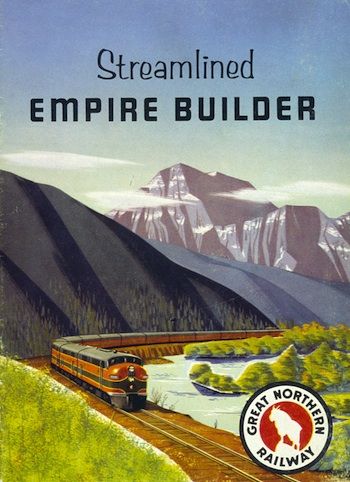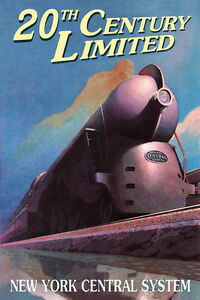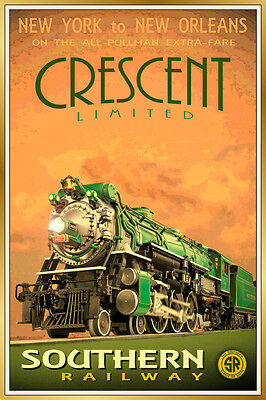“Heading for the station with a pack on my back
I’m tired of transportation in the back of a hack
I love to hear the rhythm of the clickity-clack
And hear the lonesome whistle, see the smoke from the stack” – Choo Choo Ch’boogie (Darling/ Gabler/ Vaughn) © Warner Chappell Music
In post-war, mid-century America, rail travel was still king. Passengers could criss-cross the vast country on any number of legendary routes, such

There was, at the time, no finer way to travel, but times were changing. Soon airliners would drastically cut the amount of time it took to reach far flung destinations. The post-war Baby Boom would see the growth of suburban communities, making automobile travel a necessity for many new families. And the 1950s would bring the creation of the Interstate Highway System. The heyday of American rail travel would eventually become history.
Other cultural changes were afoot as well in post-war America, most notably in popular music. The big bands of the 30s & 40s were now giving way to smaller groups, with the rhythm section becoming the more prominent feature. One of the artists having the greatest success breaking away from the larger pop orchestras of the swing era was Louis Jordan.
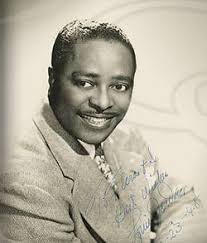
Louis Thomas Jordan was born on July 8, 1908, in Brinkley, Arkansas, where his father, James Aaron Jordan, was a prominent music teacher and bandleader. Under his father’s tutelage he would learn to play clarinet, piano, and all forms of saxophone. Although early on he played piano professionally, alto saxophone would eventually become his main instrument.
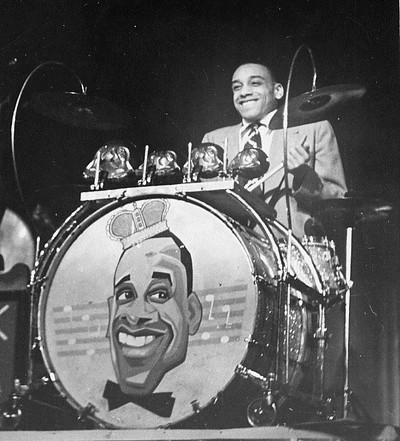
Chick Webb
Ella Fitzgerald 
Louis Jordan
In late 1936 Jordan was invited to join Chick Webb’s orchestra, based at the Savoy Ballroom in New York City. Webb, who had a physical disability, was a gifted musician, but not a great showman. Jordan, a very talented singer with a comedic flair, gained great confidence while working with Webb, and was often mistaken as the band’s leader. After a couple of years with the orchestra, and yearning to break out on his own, he was fired by Webb for trying to persuade Ella Fitzgerald (the Webb Orchestra’s female singer) to join his new band.
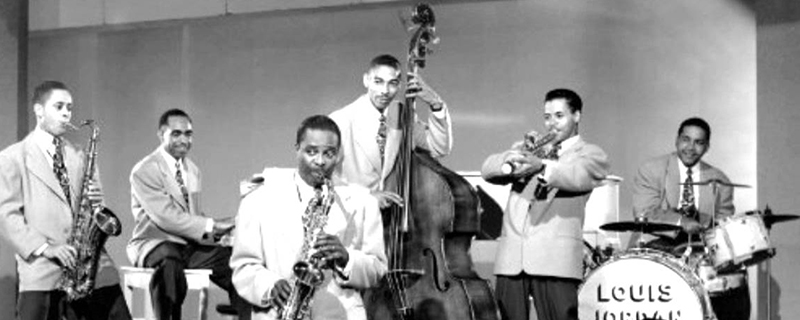
With his band, The Tympany Five, Jordan would shortly find himself at the forefront of a new wave of popular music that became known as jive, or jump blues. Essentially a hybrid of jazz, blues & boogie-woogie, jump blues was an up-tempo, dance oriented blend that became favored by a new generation of popular music lovers. Performed by smaller groups, based around rhythm sections of piano, bass & drums, this music would prove to be the forerunner to rock ‘n’ roll. Indeed, in a Tonight Show appearance in 1987, Chuck Berry would acknowledge that Louis Jordan was his main inspiration; this led to Jordan’s induction into the Rock and Roll Hall of Fame, where he is described as “the Father of Rhythm & Blues” and “the Grandfather of Rock ‘n’ Roll.

“Gonna settle down by the railroad track
Live the life of Riley in the beaten-down shack
So when I hear a whistle I can peek through the crack
And watch the train a-rolling when it’s balling the jack
I just love the rhythm of the clickity clack
So, take me right back to the track, Jack!” – Choo Choo Ch’boogie (Darling/ Gabler/ Vaughn)

In late 1942 Jordan and his band would relocate to Los Angeles, where in addition to playing major venues up & down the coast, he would begin making “soundies”, an early precursor of modern music videos. Throughout the 1940s he would record for Decca Records, where he would find his greatest success as a recording artist, and would become known as “King of the Jukebox”. Although he wrote or co-wrote many of his most notable tracks, in 1946 he released “Choo Choo Ch’Boogie”, written by Vaughn Horton, Denver Darling, and Milt Gabler. The side was produced by Gabler, then vice-president of Decca Records, who just a few years later would produce Bill Haley’s seminal anthem, “Rock Around the Clock”. Bill Haley would also go on to record “Choo Choo Ch’Boogie”, as a tribute to Louis Jordan.
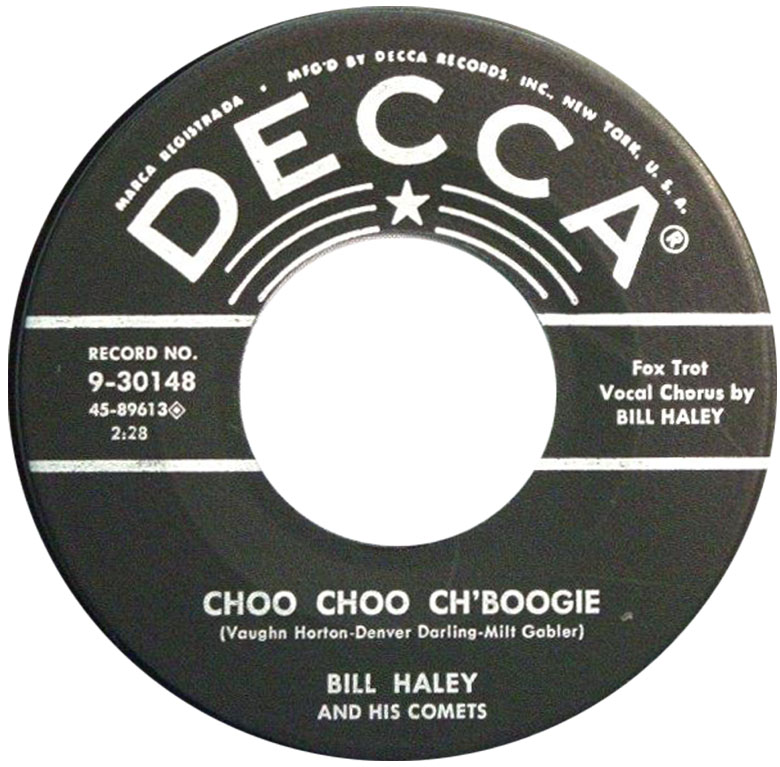
The record was one of the biggest hits of Jordan’s career. A “smash” with both black & white audiences, the record peaked at number seven on the national chart. Although the song’s authors wrote mainly for country and western artists, Jordan’s version provided an important link between country & blues: a veritable forerunner for the style of music that would become known as “rock and roll”.
“You reach your destination, but alas and alack!
You need some compensation to get back in the black
You take your morning paper from the top of the stack
And read the situation from the front to the back
The only job that’s open needs a man with a knack
So put it right back in the rack, Jack!” – Choo Choo Ch’boogie (Darling/ Gabler/ Vaughn)
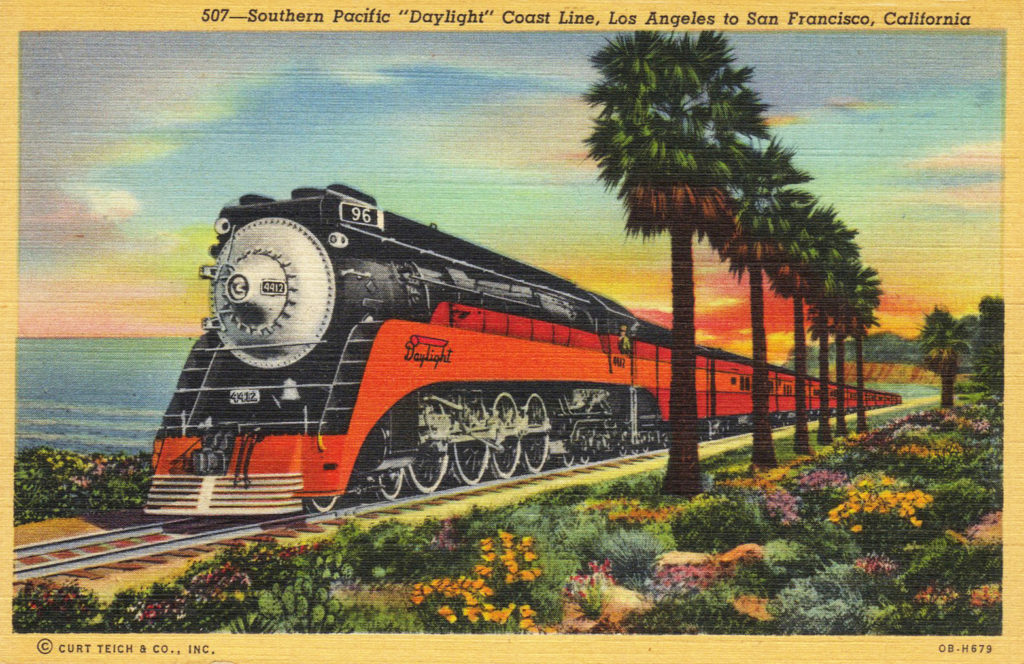
For contemporary audiences “Choo Choo Ch’Boogie” offers an exuberantly nostalgic look at train travel in the middle part of the 20th century. The song’s up-tempo buoyancy belies the vexation likely experienced by the narrator in verse two as he peruses the help wanted listings and finds nothing for which he believes himself to be qualified; a familiar predicament for many soldiers returning home after serving their country during World War II. And yet the recording expresses a joy and optimism that was shared by many as the US bounded into a new era, with promises of numerous social and cultural changes; and a beat that, while reminiscent of historic train travel, surely heralded the advent of a brand new genre of music.
“Take me right back to the track, Jack!”
Sources:
https://en.wikipedia.org/wiki/Choo_Choo_Ch%27Boogie
https://en.wikipedia.org/wiki/Louis_Jordan
https://www.rockhall.com/inductees/louis-jordan
All photos sourced through internet searches, none belong to the author

